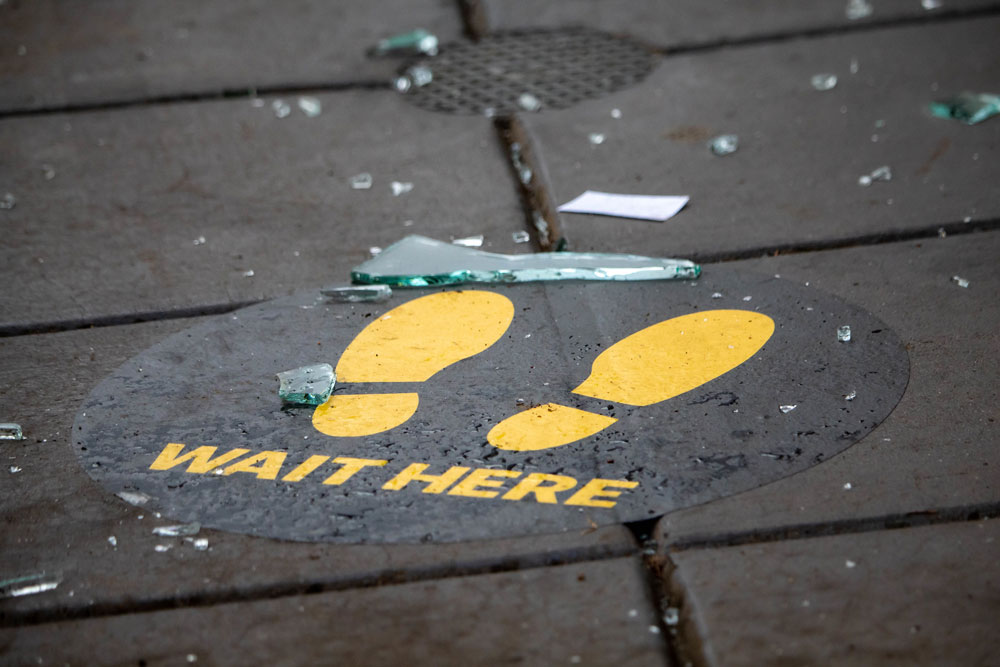
June 4, 2020; Time Magazine
According to the US Press Freedom Tracker, managed by the Freedom of the Press Foundation, “Between May 26 and June 3, the tracker received more than 279 claims of violations to press freedom—claims that can range from physical assault, arrest, damage, or seizure of equipment, and several other additional criteria,” reports Jasmine Aguilera for Time Magazine.
Put in other terms, a number of press claims that typically might occur over a period of two years or more took place in eight days. According to Aguilera, in the past three years, press freedom violations in the US have ranged between 100 and 150 a year, the equivalent of two or three a week, making the 279 incidents occurring between May 26th and June 3rd extraordinary.
The hundreds of violations in a single week represent “a scale that we have not seen before,” Kirstin McCudden, managing editor of the US Press Freedom Tracker, tells Aguilera.
On Twitter, these were reported by the US Press Freedom Tracker as follows:
- 45+ arrests
- 180 assaults (149 by police)
- 40 equipment/newsroom damage
Assault category breakdown:
Sign up for our free newsletters
Subscribe to NPQ's newsletters to have our top stories delivered directly to your inbox.
By signing up, you agree to our privacy policy and terms of use, and to receive messages from NPQ and our partners.
- 67 physical attacks (42 by police)
- 40 tear gassings
- 23 pepper sprayings
- 69 rubber bullets/projectiles
One important feature of these claims is that in many of these cases journalists have been specifically targeted by police, even after they have identified themselves as press, according to Courtney Radsch, advocacy director at the Committee to Protect Journalists (CPJ), a nonprofit group dedicated to press freedom and a partner of the Press Freedom Tracker.
Some police attacks have caused international furor. This is especially the case when the journalists who are attacked are employed by foreign publications. For example, on June 1st in Washington DC, a police officer used his shield to attack an Australian cameraman who was reporting live in front of the White House. Australian Minister for Foreign Affairs Marise Payne raised the incident in a Tuesday interview with the Australian Broadcasting Corporation and said the Australian government has officially requested an investigation into the incident.
Other incidents include:
- VICE News correspondent and producer Michael Anthony Adams was thrown to the ground by an officer and another officer pepper sprayed him, even as Adams identified himself as a member of the press and held up his credentials.
- CNN correspondent Omar Jimenez and his crew were arrested live on air in Minneapolis on the morning of Friday, May 29th.
- Jared Goyette, a freelance journalist, was shot in the face with a rubber bullet on Saturday, May 30th, while covering protests in Minneapolis.
On Wednesday, the ACLU of Minnesota filed a class action lawsuit on behalf of journalists against the city of Minneapolis, the Minnesota State Patrol, and the Minneapolis police.
Goyette, the freelance journalist who is the lead plaintiff in the ACLU’s lawsuit, notes that when journalists are attacked, it is not just journalists who are affected:
“Actions like this make protesters, people trying to advocate for change, more vulnerable,” Goyette says, “because journalists provide a witness, and police are aware of that. Without journalists there, police or other people in power can feel a sense of impunity that no one will see what’s happening anyway. Everyone needs to know people are watching.”—Steve Dubb













